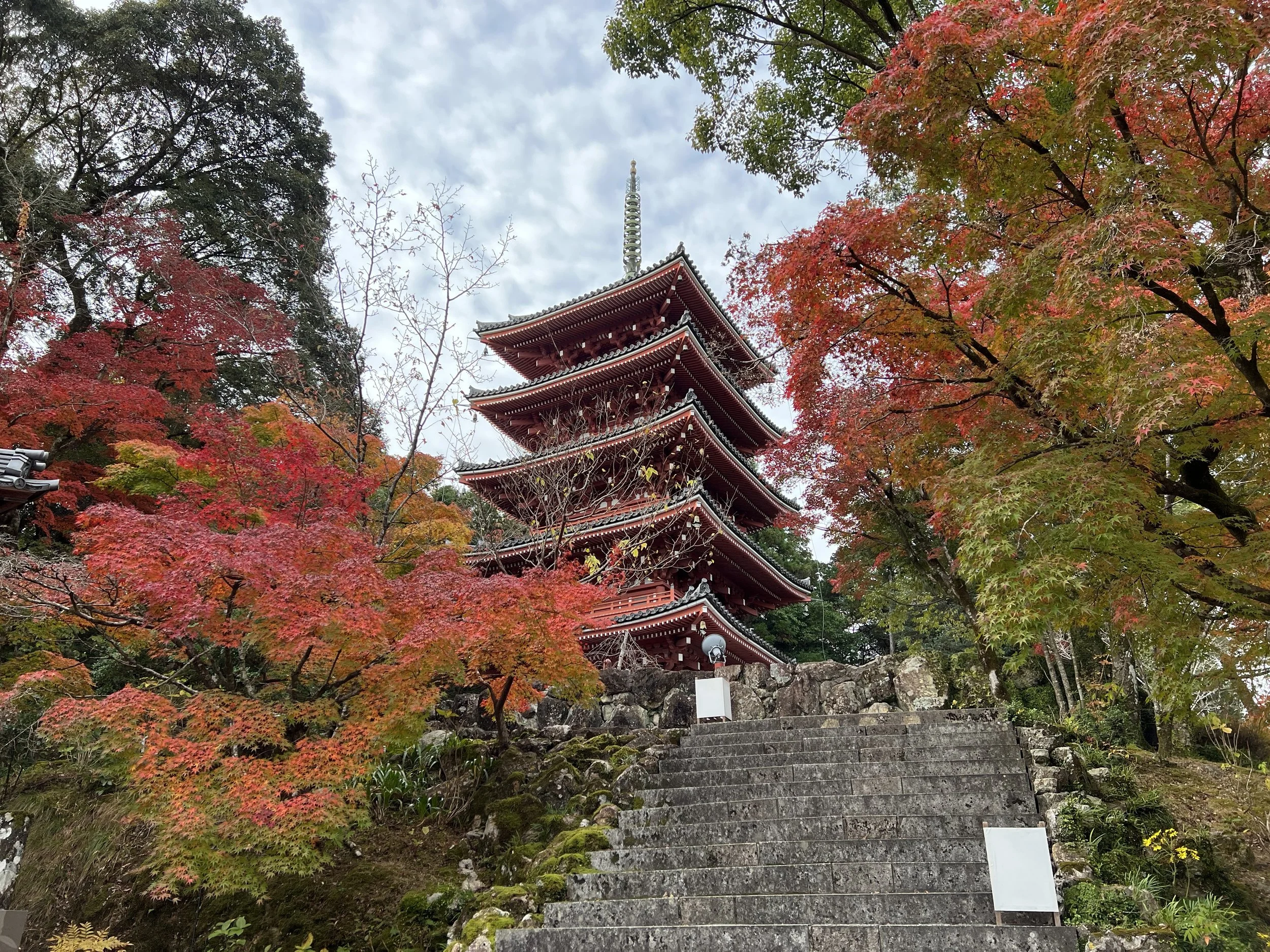Shikoku Henro - Chikurinji Temple & Sekkeiji Temple - Kochi, Japan
One of the areas I was most looking forward to exploring in Kochi was Katsurahama, but as I planned my route, I realized two of the Shikoku Henro temples—Chikurinji Temple (Temple 31) and Sekkeiji Temple (Temple 33)—were conveniently along the way. Naturally, I made sure to include them in my itinerary.
Although I could have walked this section of the pilgrimage route, I decided to shorten the distance and use the bus instead. I stopped by the Kochi Station Information Centre first to pick up a one-day pass for the My Yu Bus, the Kochi City tourist bus that covers major attractions including the temples and Katsurahama. The pass was great value compared to regular fares. The bus was quite full, but I was lucky to board early enough to get a seat.
Rather than getting off at the Chikurinji stop, I got off at Godaisan Observatory, just a few minutes’ walk away. Godaisan Park offers sweeping panoramic views over Kochi City, and the loop trail through the park was calm and scenic, with some autumn colours still lingering. After taking in the views and enjoying the quiet atmosphere, I made my way toward Chikurinji Temple through the west gate.
Chikurinji Temple is famous for its vibrant Japanese maples, which turn brilliant shades of gold and crimson in autumn, creating a deeply tranquil setting. The five-storey pagoda, framed by these colourful trees, is one of the most photographed spots in Kochi. The temple’s landscaped garden, designated as a National Place of Scenic Beauty, is also a highlight. I spent some time wandering the temple grounds, soaking in the serenity—the sound of rustling leaves, the soft breeze, and the warm hues of fall all combining into a peaceful moment.
After my visit, I caught the bus toward Katsurahama, then continued on to Sekkeiji Temple later in the afternoon. The closest bus stop to the temple is about 400 metres away, and the walk through the quiet streets added to the sense of calm before arriving at the modest temple gate.
Sekkeiji Temple sits roughly four kilometres from Katsurahama Beach, which is famous for its white sand and moonlit reflections on the water—a beauty echoed in the temple’s name, which can be translated to “Temple of Moonlight on the Tide.” Compared to the other temples I’ve visited, Sekkeiji feels smaller and more understated, but no less meaningful. Inside are sixteen Buddhist statues crafted by master sculptors Unkei and Yukei, among others, designated as Important Cultural Properties. These can be viewed by reservation only.
After paying my respects, I made my way back to the bus stop for the return to Kochi Station. It was a day filled with culture, calm, and a deeper appreciation for the spiritual side of Kochi’s landscapes.
History & Background
#31 Chikurinji Temple 竹林寺 - One of the most picturesque temples on the Shikoku Pilgrimage. Founded by the Buddhist monk Gyoki in the 8th century, it later became associated with Kobo Daishi (Kukai). The temple is known for its elegant garden and towering five-storey pagoda, as well as its deep connection to Buddhist learning and the Tendai sect, earning it the nickname “Temple of Learning.”
#33 Sekkeiji Temple 雪蹊寺 - Originally part of a Zen temple called Shoryuji, founded in the Kamakura period. It became a Shingon temple under the orders of the daimyo Yamauchi Kazutoyo in the Edo period. Its name, meaning “Snowy Path Temple,” reflects its poetic setting near the ocean and moonlit shore of Katsurahama.
To see my progress on the full Shikoku Henro Pilgrimage, visit my Shikoku Henro - Temple List & Progress..
Getting There
From Kochi Station, take the My Yu Bus, which runs on a loop connecting major attractions including Godaisan Observatory, Chikurinji Temple, Katsurahama, and Sekkeiji Temple. The 1-Day Pass offers unlimited rides and is available at the Kochi Station Information Centre.
Alternatively, local buses also operate between Kochi Station and each stop, though schedules can be infrequent. Taxis are available, and for those with more time, walking parts of the Shikoku Henro trail offers a rewarding pilgrimage experience.
Route Overview
Distance: 1.52 km (Godaisan Observatory → Chikurinji Temple)
Total elevation gain: 39 m
Duration: 24 min (with breaks 33 min)
Difficulty: Easy
Peak: Mt Godai 五台山 146m
Bus Info: You can get more info about My-Yu Bus including bus schedule, cost, and ticket sale locations here.
Cost Breakdown
My Yu Bus Pass: 1 Day Pass— ¥990
Food: ¥1,800















